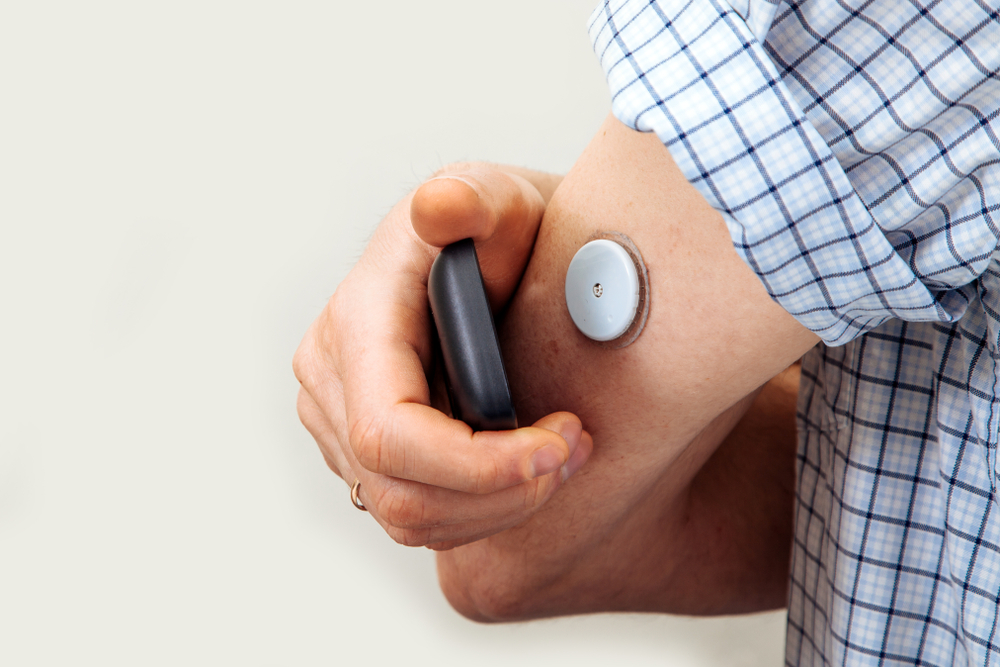
Severe mental illness (SMI) refers to the presence of psychiatric symptoms that can significantly and persistently interference with a person’s ability to do things in day-to-day life. SMI is usually associated with schizophrenia/psychosis and bipolar affective disorder (Public Health England, 2018). In its broader definition, SMI also includes conditions such as major depressive disorders of moderate-to-high severity, severe anxiety disorders, severe substance use, and severe personality disorders (Liu et al, 2016; Ruggeri et al, 2000).
People with SMI are at a higher risk than the general population of many physical illnesses, especially cardiovascular, respiratory and liver diseases, infections, diabetes, hypertension and cancer. These have a direct impact on life expectancy and lead to early death by 10-20 years for people with SMI (WHO, 2018), even though 2 in 3 of these deaths are from preventable physical illnesses (Public Health England, 2018).
Digital technologies, in the form of apps, websites, wearable devices and social networks, are increasingly used to promote healthy lifestyles, facilitate access to healthcare and up-skill professionals and peers in health-related interventions. It’s time we harnessed the power of such technologies to close the mortality gap that exists between people with SMI and the general population.

People with severe mental illness (SMI) die 10 to 20 years earlier than the general population even though 2 in 3 deaths are from preventable physical illnesses.
Methods
The paper draws on five published reviews and several subsequently published studies to identify digital and tele-health technologies used for the care and support of people with SMI. The paper describes the World Health Organization’s (WHO) multilevel risk framework for early mortality in people with SMI (Liu et al, 2017), which clusters different risk factors under three levels:
- Individual, e.g. lifestyle behaviours, psychiatric illness severity, chronic medical conditions.
- Health system, e.g. poor quality and fragmented service delivery, effects of antipsychotic medications and other treatments, limited knowledge and skills among providers.
- Social determinants, e.g. limited access to social support, poverty, low health literacy.
Results
Relevant digital and tele-health technologies are presented in three groups according to the targeted risk factors for early mortality within each level of WHO’s multilevel risk framework (Liu et al, 2017).
1. Technologies Targeting Individual Risk Factors for Early Mortality
- Lifestyle behaviours: Smartphone applications, web-based programmes, wearable tracking devices and conventional telephone-delivered coaching can facilitate weight loss and smoking cessation.
- Psychiatric illness severity: Smartphone applications with clinician support can help self-monitoring and clinician monitoring and management of symptoms.
- Chronic medical conditions: An electronic personal health record for patients with SMI and comorbid medical conditions enables them to access their own records and monitor important health indicators.
2. Technologies Targeting Health System Risk Factors for Early Mortality
- Poor quality and fragmented service delivery: A system comprising a smartphone app, a suite of web-based resources and web-based training supported by a tele-coach was used following hospital discharge to prevent relapse. Another web application has facilitated shared decision making and communication between clinicians and patients.
- Effects of antipsychotic medications and other treatments: An electronic screening tool has helped clinicians and patients record, monitor and change metabolic syndrome indices.
- Limited knowledge and skills among providers: A web-based platform can help deliver cognitive behaviour therapy skills training to clinicians working with patients with SMI.
3. Technologies Targeting Social Determinants of Early Mortality
- Limited access to social support: Social media and text-messaging can leverage peer support, social networks and personal relationships.
- Poverty: A smartphone application has been used to support employment and help people with SMI manage social and occupational responsibilities.
- Low health literacy: Smartphone applications provide information for self-management of psychiatric and physical symptoms.

Weight loss and smoking cessation are two areas of physical health where digital interventions have been extensively used to target early mortality in people with SMI.
Conclusions
We can harness the power of digital and tele-health technologies to close the mortality gap that exists between people with SMI and the general population by intervening at three levels:
- At an individual level by enabling self-care
- At a health system level by improving clinical services
- At a societal level by providing peer support.

Smartphones, social media, web-based programmes, wearable tracking devices, electronic screening and electronic health records can enable people with SMI to look after themselves and connect with professionals and peers.
Strengths and limitations
The unique contribution of this paper is in mapping existing digital and tele-health technologies onto a specific risk framework for early mortality in people with SMI. Technologies are mapped onto this framework according to the risk factors they target. The framework itself is interesting as it offers a comprehensive overview of factors other than physical health and lifestyle that can account for early mortality, including the severity of the psychiatric illness itself and the social disability associated with it.
The paper has conceptual value, because it organises existing technologies in a way that is clinically useful. Different technologies have different functions and outcomes, but they can collectively improve life expectancy for people with SMI by changing risk factors within individuals, health systems and communities. The sources used by the authors to identify and describe such technologies are likely to be credible, as they are recently published reviews and studies.
The methodological rigour of the paper is limited for several reasons:
- It does not use any systematic methods to search the literature, so potentially relevant and important reviews and studies may have been missed.
- There are no inclusion/exclusion criteria for different types of technologies or clinical conditions. This is important given the broad definition of SMI in some of the literature and the differences between high-tech hardware/software and basic telecommunication media, both of which are included here as “technologies”.
- There is no quality appraisal of the included reviews and studies, so we cannot tell whether they are biased or not.
- It does not report any data (e.g. effect sizes) to substantiate the statements made about the benefits of different technologies.
- It does not give enough information on population characteristics, control conditions and outcome measures used in the evaluation of such technologies to enable us to gauge their applicability to different people with SMI and to different clinical services and communities.

A framework of early mortality for people with SMI can be a roadmap for technologies to target risk factors within individuals, health systems and communities.
Implications for practice
Narrative reviews of technologies specific to people with SMI can add to existing repositories of digital resources, such as the NHS apps library and other reputable sources recommending health technologies (NHS, Health and fitness trackers). Demonstrating how digital media and tele-health have been used within routine care pathways to narrow the mortality gap for people with SMI can inspire similar work at NHS technology test-beds (NHS England, Global Digital Exemplars). Technology-enabled care to improve physical health outcomes and increase life expectancy for people with SMI fits with the objectives of the Closing the Gap Network, an initiative funded by UK Research and Innovation (UKRI) (University of York, 2019).
Although WHO’s multilevel risk model for early mortality in people with SMI (Liu et al, 2017) is comprehensive in demonstrating the plurality of risk factors and the complexity of interactions between them, mapping technologies to this model is less informative for prioritisation of resource allocation. For example, do we invest in technologies that train clinicians in therapy for psychosis, or in technologies that help clinicians monitor metabolic syndrome indices? Although a multi-purpose approach is ideal, focusing on technologies that can reduce the risk of cardiovascular, respiratory and liver diseases, infections, diabetes, hypertension and cancer, can have a direct and significant impact on a large percentage of preventable deaths in people with SMI.
There is a myriad of health-related apps, websites, wearable devices and social networks usable by the general population. To make such technologies usable by people with SMI, the authors consider “… simplified layout, content at lower reading level and easy to navigate interface…” as necessary features (p.19). The inference of ‘dumbing down’ technologies for all users with SMI in the face of their cognitive and motivational difficulties may be unhelpful or off-putting. In any case, technologies usable by the general population are intrinsically designed to help information processing and motivation, e.g. through an intuitive interface, brief and staggered content, automated prompting and instant feedback. Tailored personal support blended with mainstream technologies can maximise their usability and utility as means to helping people with SMI live longer and healthier lives.

To close the mortality gap for people with SMI, we need to prioritise technologies that directly target physical illnesses responsible for most preventable deaths.
Conflicts of interest
Lina Gega co-leads the Digital Technologies Theme for the’ Closing the Gap’ (CTG) Network+ at the University of York, led by Prof. Simon Gilbody and funded by UK Research and Innovation (UKRI). The CTG Network+ focuses on improving health and reducing health inequalities for people with severe mental illness. Lina is conducting research on digital technologies, but she holds no financial interests or intellectual property for any technology. The views expressed here are her own and do not necessarily reflect the views of the University of York or the NHS or the UKRI.
Links
Primary paper
Naslund JA, Aschbrenner KA (2019) Digital technology for health promotion: opportunities to address excess mortality in persons living with severe mental disorders. Evidence-Based Mental Health 2019; 22:17-22.
Other references
Liu NH, Daumit GL, Dua T, et al. (2017) Excess mortality in persons with severe mental disorders: a multilevel intervention framework and priorities for clinical practice, policy and research agendas (PDF). World Psychiatry,16:30–40.
Public Health England (2018) Severe mental illness (SMI) and physical health inequalities: briefing.
Ruggeri M, Leese M, Thornicroft G, Bisoffi G, Tansella M (2000) Definition and prevalence of severe and persistent mental illness. British Journal of Psychiatry, 177:149-155.
University of York (2019) Closing the Gap Network.
World Health Organization (2018) Management of physical health conditions in adults with severe mental disorders: WHO Guidelines.

My son has ADHD and he is also in the AUTISM spectrum as well even knowing that he functions ok most of the time there are times during the year where he struggles and I do belive that what was said on here is quite helpful so I will be showing this to him I thought this read was very helpful to me.
Thank you